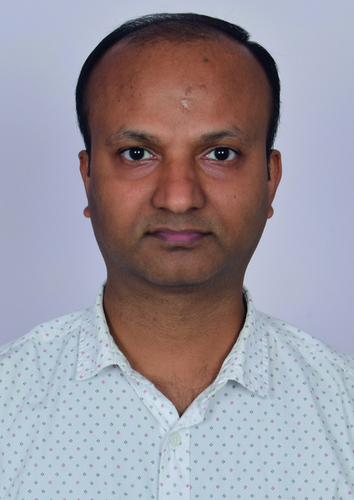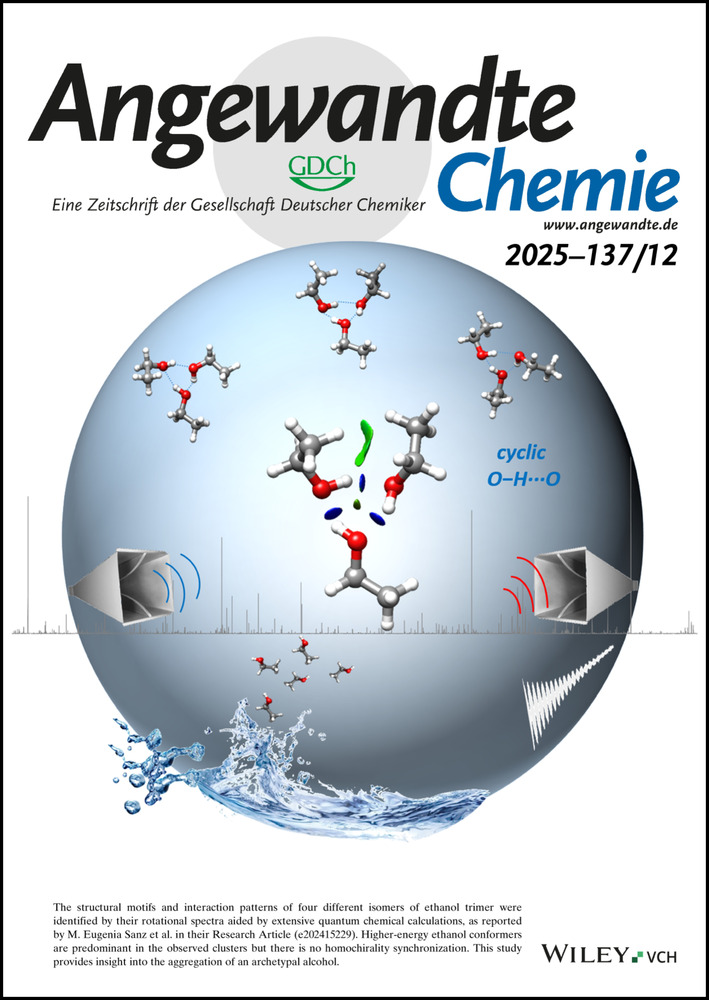Bimalendu Adhikari
Graphical Abstract
“My favorite example of chemistry/science in everyday life is the self-assembly of soap molecules into micelles, a simple yet brilliant process that helps with cleaning by trapping and removing oils and dirt… I am most proud of my group when all members come together to tackle challenges that none of us could solve alone…” Find out more about Bimalendu Adhikari in his Introducing… Profile.
Bimalendu Adhikari
The author presented on this page has published his first article as a submitting corresponding author in Angewandte Chemie:
“Cu(I)-Induced G-quartets: Robust Supramolecular Polymers Exhibiting Heating-Induced Aqueous Phase Transitions into Gel or Precipitate”: N. Sahu, C. Guchhait, I. Mohanta, V. Suriyaa, B. Adhikari, Angew. Chem. Int. Ed. 2025, 64, e202417508.
-
Position, Location:
-
Associate Professor, Department of Chemistry, National Institute of Technology, Rourkela (India)
-
Homepage:
-
https://www.nitrkl.ac.in/FacultyStaff/FacultyProfile/adhikarib
-
ORCID:
-
-
Education:
-
2005–2007, M.Sc. in Chemistry, University of Calcutta (India)
2007–2012, Ph.D. supervised by Prof. Arindam Banerjee, Indian Association for the Cultivation of Science (India)
2012–2015, Postdoc with Prof. H.-B. Kraatz, University of Toronto (Canada)
2015–2016, JSPS Postdoc with Prof. Shiki Yagai, Chiba University (Japan)
-
Research:
-
Supramolecular chemistry, bioorganic chemistry, peptides, G-quadruplexes
-
Hobbies:
-
Travelling, reading, watching classic movies, following the news
The greatest scientific advance of the last decade was the development and widespread application of mRNA vaccine technology.
My favorite example of chemistry/science in everyday life is the self-assembly of soap molecules into micelles, a simple yet brilliant process that helps with cleaning by trapping and removing oils and dirt.
Modern science needs to focus on sustainable solutions to address global challenges, such as renewable energy, circular materials, climate resilience, and advanced healthcare.
I would have liked to have discovered the DNA double helix, the molecular blueprint of life.
The most important future applications of my research are in areas ranging from advanced materials, such as supramolecular degradable plastics, to biomaterials for tissue engineering and other fields requiring robust yet dynamic supramolecular assemblies.
My favorite job in the lab is understanding and interpreting unexpected and intriguing results. I am passionate about advancing research at the interface of supramolecular, bio, and polymer chemistry, with our work contributing meaningfully and opening new dimensions in the field.
Valuable resources for me to keep up with research in my field are journals and conferences.
My favorite thing about my lab group is that students are learning how to do meaningful research with honesty and ethics, while supporting each other in solving challenging scientific problems and building their skills and confidence as researchers.
I advise my students to focus on the core problem, master the fundamentals, and always consider the broader impact.
The most important quality of a role model is the ability to inspire others through integrity, perseverance, and a passion for learning.
I am most proud of my group when all members come together to tackle challenges that none of us could solve alone.
I can never resist exploring answers to intriguing research results or reading a top-quality article in my field.
I recharge my batteries by staying motivated, often from within.
If I were not a scientist, I would be a teacher, devoting myself entirely to education. Fortunately, I currently enjoy the best of both worlds—teaching and research.
My favorite time of day is after official business hours—especially in the evening or late at night—when I can focus deeply on my research in peace.
Behind the Science
Guanosine (G) facilitates G-quartet assembly, a non-canonical DNA secondary structure typically stabilized by K+ ions. Here, we report that Cu+, compared to K+, vastly enhances G-quadruplex stability and forms thermally stable, redox-reversible supramolecular polymers. During the search for suitable metal ions to form responsive G-quadruplexes (stable gels), B.A. initially selected Cu+ for its redox reversibility. Unlike conventional supramolecular assemblies such as G4.K+, which typically disassemble upon heating, G4.Cu+ exhibited heating-induced gelation, revealing LCST behavior—a finding that greatly surprised the team. Uncovering the exact mechanism behind the extraordinary stability of G4.Cu+ assemblies posed significant challenges.





